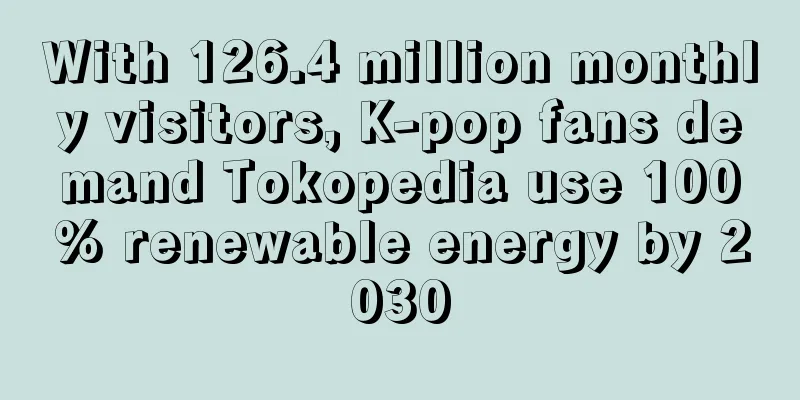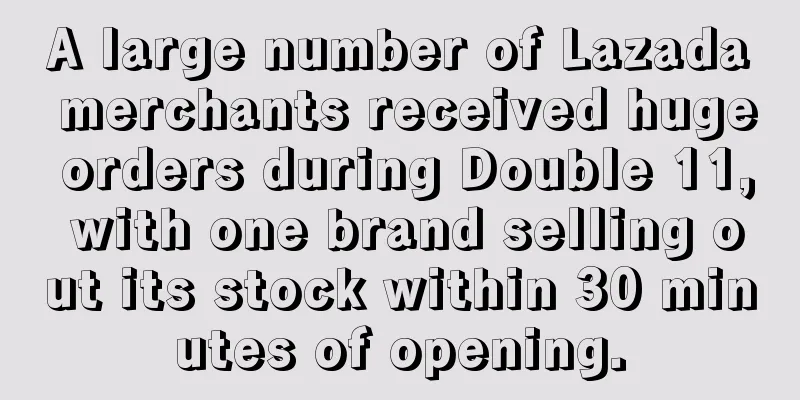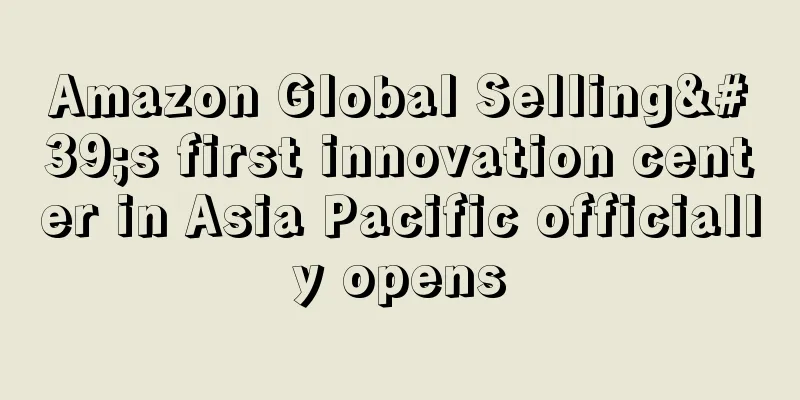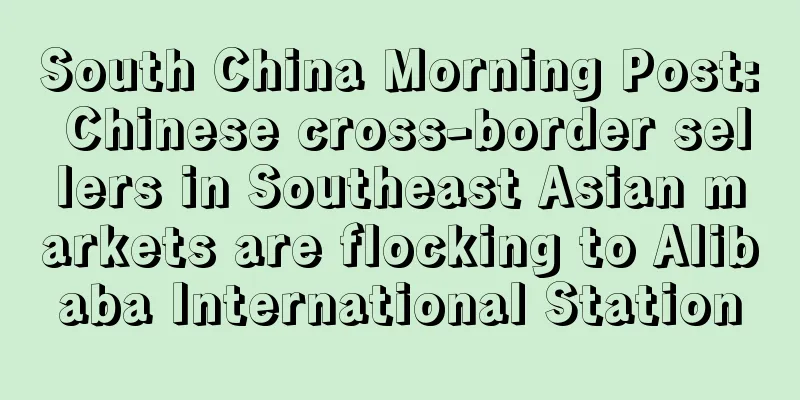A large number of sellers are "making money" in emerging markets
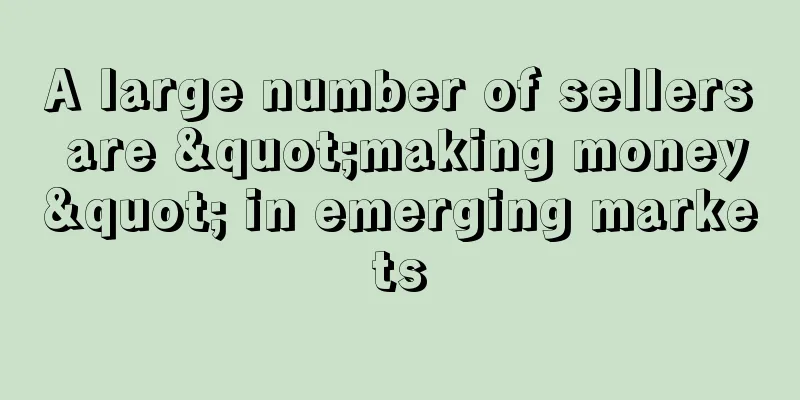
|
Is it difficult to make money outside of Europe and the United States?
Should they stay in the European and American markets and earn money from the rich? Or should they go to the emerging blue ocean markets and grab a spot?
Cross-border sellers believe that they can only make comparisons after they have done everything.
In order to get rid of the heavy dependence on the European and American markets, cross-border sellers have continued to look for new growth in recent years, and multi-channel layout has become a hot word in cross-border sales. Amazon data shows that as of June 2023, nearly half of Chinese sellers on Amazon have conducted business in more than two international sites.
Whether it is the Southeast Asian market adjacent to China, the "young and wealthy" Middle Eastern market, or the Russian market that is extremely fond of Chinese products... Chinese sellers are everywhere.
In the view of a group of industry insiders, emerging markets can be said to be completely a "seller's market", that is, supply is less than demand, and whoever goes there first will be able to seize the opportunity. These markets outside Europe and the United States carry the beautiful expectations of sellers, and many of them have lived up to their expectations and become the overseas high ground for Chinese brands, creating a series of wealth-making myths such as "only one month after going online, the product became the top 1 in the Middle East station category" and "achieving the 100 million small goal in 2 years".
The emerging e-commerce market is rising strongly, and brand sellers are actually the first pioneers to "go to Southeast Asia". Well-known brand sellers such as Anker, UGREEN and other big brands that have long been famous overseas, as well as well-known domestic brands such as Midea, Stone Technology, TYMO, Xihao and other emerging brands, have already "grabbed land" in these regions.
The European and American markets have become a "red ocean", which is one of the key reasons why cross-border sellers, especially those without obvious competitive advantages, are eager to flee. However, in the process of opening up new markets with bright prospects, many small and medium-sized sellers seem to be at a disadvantage again, and are more likely to become "victims" of the market's maturation process. There are many who "spend hundreds of thousands of dollars but don't even see a response, and finally have to run away at a loss."
After the first round of fierce competition, have emerging markets also been occupied by powerful and well-funded brands? According to established market rules, the first batch of pioneers can often occupy the absolute leading position in the industry by virtue of their first-mover advantage. If new entrants do not have obviously differentiated products, it is difficult for them to have a chance to turn the tables.
A large number of cross-border sellers are leaving Europe and the United States to make money
Europe and the United States have always been regarded as a paradise for cross-border sellers, and have successfully produced a number of top sellers such as Anker and Zhiou. It is undeniable that the European and American markets do have a good cross-border business environment.
European and American consumers are large, online shopping is popular, e-commerce penetration is high, and infrastructure is relatively complete. According to eMarketer data, the e-commerce penetration rate in the United States will be 15.6% in 2023 and is expected to rise to 20.6% in 2027.
Because of this, China's cross-border e-commerce exports are mainly concentrated in developed countries and regions such as the United States and Europe, with the United States and the United Kingdom accounting for 34.3% and 6.5% respectively.
The word "volume" is the first feeling that cross-border sellers have when doing business in the European and American markets.
In the past incremental market stage, many sellers could easily make profits by relying on information differentials. However, when the myth of cross-border e-commerce making people rich was exaggerated, batches of competitors continued to enter the European and American cross-border circle, and with the popularization of major product selection tools , the difficulty of product selection has basically reached a hellish level . The advantages derived from information differentials are no longer there. The industry has officially entered the "stock market" stage, and the competition between sellers will only become more and more intense.
Now, the possibility of speculative product selection is greatly reduced. Basically, each category is controlled by top sellers. They are experienced, strong, have mature supply chains and sufficient funds . It is difficult for small and medium-sized sellers to stand at a high position. They can only look for niche blue ocean categories that top capital does not value. Even if you successfully find a hot product, if the product threshold is too low, there may be many competing products "on the same stage" as soon as the product is put on the shelves for sale. At this time, the one with the lowest price is more likely to be the final winner.
The seller Xiao Zhang is experiencing the moment of being " swept up " by capital . A super low-priced product has been sold in the US store for more than a year and was about to enter a stable profit-making stage. Suddenly, it was disrupted by a hot-selling product. The other party started with large discounts and first-line advertising promotions, and quickly rushed to the top ten in the small category ... Xiao Zhang was immediately shocked and had already anticipated the final outcome of this product: losing money, clearing out the stock, and exiting the market!
Sellers on the European site may be even more miserable. As we all know, compared with other markets, the European site has higher requirements for sellers. VAT, EU-UK agency, tax agency, etc. are all additional expenses. However, the "competitive" environment is exactly the same as other markets. The operating costs of sellers are higher, and the downward profit outcome is inevitable.
Red ocean products are not to be touched, and niche blue ocean products with no barriers to entry have no long-term operational value. This is the current situation that European and American sellers generally face.
The mature Japanese market has also been widely criticized by cross-border sellers this year. According to feedback from sellers on relevant Japanese sites, the Japanese market is not large, product price involution is more serious than in the United States, and consumers pursue extremely high cost performance and high performance. What is scary is that batches of new sellers continue to pour in with junk products at low prices. " The leeks always think that they are not leeks, but the chosen ones . In the end, they often only succeed in ruining the market. " The old sellers are miserable.
At the same time, in the complex and ever-changing economic environment, panic is always looming over cross-border sellers. Many cross-border sellers have continuously expressed similar concerns: the company's export business accounts for a large proportion, especially the United States is the company's main market. If the friction intensifies, the competitive advantages of some of the company's products in related markets may be weakened, resulting in a decline in the company's revenue and profit levels from the United States, which in turn has an adverse impact on the company's operating performance.
When everyone deeply realizes the cruelty of the existing market, there are only two options: grab the existing market or open up another track.
A large number of sellers choose the latter. Yienjun learned that many sellers are actively exploring markets in Southeast Asia, the Middle East, Africa and other non-European and American regions.
Once upon a time, the European and American markets, which were collectively bet on by Chinese sellers, are "falling out of favor", and the cross-border battlefield is expanding beyond Europe and the United States.
Revenue exceeds 100 million! Cross-border sellers such as Anker and UGREEN are popular in the blue ocean market
According to Marketplace Pulse research, Amazon has added nearly 5 million sellers since 2018. About 40% of them joined the U.S. marketplace, while the rest joined one of 20 international marketplaces.
At the same time, Amazon's global sites continue to open to Chinese sellers, including the newly opened sites in Brazil and Turkey in 2023. Currently, a total of 19 sites have been opened. A survey at the 2023 Amazon Global Store Cross-border Summit showed that more than 50% of the surveyed Chinese sellers plan to expand their business to more sites in the next 6-12 months. Between August 2022 and August 2023, the number of Chinese sellers who launched Amazon sites other than the US site increased by 45%.
With the development of the Internet, local economic progress and improvement of infrastructure, emerging economies such as Latin America and Southeast Asia, which were once "ignored" by sellers, have risen, and the penetration rate of e-commerce has continued to increase, becoming a hot commodity that everyone is vying for.
According to the Blue Book of China's Cross-border Export E-commerce Industry released by China Insights in 2023, e-commerce sales in Southeast Asia and Latin America are expected to grow to US$172.1 billion and US$226.5 billion respectively by 2027, with a five-year compound growth rate of 12.7% and 8.0%, showing broad development potential. Among the emerging markets, Latin America is the most prominent. According to PCMI's forecast, the growth rate of Latin American e-commerce will remain at around 21% from 2023 to 2026, ranking first in the world. It is expected that cross-border goods in Latin America will account for 16% of GMV in 2025.
When it comes to entering emerging markets, Chinese cross-border sellers have obvious advantages. In detail, Chinese sellers mainly have the following advantages:
1. Category advantage. There are not many light industrial products in many emerging regions, and they mainly rely on imports. In the Middle East, such as the UAE, there are not many local manufacturers. Now more than 50% of retail purchases come from foreign sellers. The local demand for daily necessities, consumer goods, consumer electronics, furniture, personal care and other products is very large. These are the categories that are relatively lacking in local production, and they happen to be the advantage categories of Chinese sellers.
2. First-mover advantage: the e-commerce penetration rate in emerging markets continues to rise. In this context, brands that enter emerging markets earlier can largely occupy the minds of local consumers and gain first-mover advantage.
3. Scale advantage. Many Chinese sellers have accumulated rich operating experience in mature sites such as the United States, Japan, and Europe. An operating system is common in many countries around the world. Sellers can easily form scale advantages by copying these experiences to emerging markets and then making localized improvements.
Unlike mature e-commerce markets, e-commerce markets outside Europe and the United States are still in the early stages of development. Although from many perspectives, these markets are not the best bases for e-commerce development, such as low product prices, imperfect online shopping infrastructure, and serious returns and lost items ... But this cannot stop Chinese sellers from rushing in. The reason that "consumers have a strong demand for products and sellers can sell them if they have goods" is an irresistible attraction for cross-border sellers who have been "squeezed" for a long time.
Chinese sellers saw the opportunity and a group of pioneers got a piece of the pie.
Some people started to "venture" in Africa a few years ago and found that Africa, especially East Africa, has a huge demand for power tools and auto parts. Although Africa is no longer a blank market, there are still many opportunities. Some people specialize in doing business in India and found that Indians trust Chinese products very much, believing that the price is low but the quality is not bad, which is undoubtedly beneficial for Chinese sellers . Sellers who mainly do business in Southeast Asia also believe that the local online shopping group is huge and the competition is relatively not fierce. If the product has a high cost-effectiveness and can provide good after-sales service, local customers are also very willing to pay ...
Well-known cross-border sellers, such as brand sellers, have already tasted the sweetness in emerging markets.
As a listed company with big sales volume, Jihong Co., Ltd. has not been deeply rooted in Europe and the United States, but in Southeast Asia, Northeast Asia and the Middle East . In 2023, Jihong Co., Ltd.'s e-commerce business revenue reached 4.257 billion yuan.
As a typical representative of the mass-market distribution type, Huakai Yibai has actively expanded emerging third-party e-commerce platforms in recent years, and increased its layout of e-commerce platforms such as Shopee and Mercado Libre for Southeast Asia and Latin America. With the emerging e-commerce platform "Mercado libre" in Latin America as the core, it has vigorously expanded its sales radius and enjoyed the market dividends in emerging regions, helping to achieve total revenue of 1.697 billion yuan in the first quarter of 2024, a year-on-year increase of 23.05%, and net profit attributable to shareholders of 81.9489 million yuan, a year-on-year increase of 7.67%.
As of the beginning of 2024, UGREEN's sales on Amazon Middle East have maintained double-digit growth for three consecutive years; UGREEN's Middle East business accounts for more than 6% of UGREEN's overall Amazon business. UGREEN's Nexode series of chargers and power strips have become popular products on the Middle East site, especially during the Double Eleven and White Friday promotions.
Amid the Amazon ban wave, Youkeshu has actively saved itself. While deepening its presence on mainstream platforms such as Amazon and AliExpress, it has also actively developed emerging platforms such as Shopee and Lazada, achieving full coverage of "traditional platforms + emerging platforms". Currently, the company's products cover Europe, America, Southeast Asia, Japan, South Korea, Russia, Central and South America and other regions.
Public data shows that Anker Innovations' revenue in the Middle East market reached 900 million yuan in 2023, accounting for 5.19%. Faraz Mehdi, Anker's sales director for the Middle East, Africa and South Asia, the UK and Ireland, said that Amazon Middle East is an important part of Anker's global business layout. At present, Anker's main products on Amazon Middle East include cables, headphones, vacuum cleaners, etc. In 2023, the sales of high-end models of vacuum cleaners increased by about 30% compared with 2022; in addition, during the White Friday in 2023, Anker's brand soundcore true wireless headphones achieved a year-on-year growth of more than 100%.
At the same time, Anker Innovations' revenue in Australia, Turkey, Southeast Asia and other regions also reached 1.4 billion yuan, of which Australia contributed more than 662 million yuan.
As the track becomes crowded, are emerging markets still the best alternative to Europe and the United States?
In emerging markets with unlimited potential, a group of sellers have successfully emerged. However, a phenomenon that cannot be ignored is that emerging markets cannot bear so many imaginations about cross-border "getting rich quick".
"Chinese sellers are now flocking to emerging markets, but they have not considered the actual local conditions." Industry insiders commented that various problems show that there are resistances in emerging markets. After Chinese sellers flocked in to seek new sales, challenges and problems followed.
On the one hand, emerging markets have unique consumer demands. How to grasp local customs, culture and consumption habits? How to identify demand in cross-regional and cross-cultural situations? Many sellers face these unavoidable issues and often cannot get answers. In addition, emerging markets have different import rules. How to ensure compliance with local laws and regulations and tax and brand registration requirements, such as different value-added tax rates in different countries, is also a pain point that sellers need to overcome.
On the other hand, the development of emerging markets is far less than that of Europe and the United States, and cross-border e-commerce still has many imperfections. Sellers are turning from the European and American markets, which have already moved towards vertical category branding, to emerging markets, which still have relatively extensive distribution models. Perhaps the operating model has become simpler and the operating difficulty has dropped sharply, but many problems have arisen.
First, the total market volume is relatively small, and it may take only a few orders to be listed on the BSR. Buyers have relatively low purchasing power and are more interested in high-quality and low-priced products . The products that actually receive orders are products with relatively small average order values , which have low profits .
Secondly, follow-selling is rampant. If a product sells better , it will soon be copied by other sellers . There is no way to complain and it is difficult to drive them away . Black technology and manipulation of reviews are even more rampant , resulting in a winner-takes-all situation for those with resources . Small sellers need to spend a long time and high costs to make mistakes.
At the same time, logistics is also a big problem in many regions . For example, in Africa and Mexico , the quality of people is not very high, and lost items and unexplained returns often occur . A Meikeduo seller said that he had encountered a situation where his goods were robbed by locals on the way; there are also Indian sellers who said that the return rate of the platform is frighteningly high, and they went bankrupt after just two months of being returned.
In addition, many e-commerce platforms in emerging markets are not perfect, the rules and order of the platforms are not transparent, and sellers do not understand the operating rules of the platforms. For example, if you do not run ads, there will be basically no orders , and if you run ads, there may still be no orders. The platforms are often prone to errors, and various bugs are superimposed, and the collection of payments is relatively large . The most important thing is that the traffic of third-party sellers is unstable. Some people have settled in Jumia Africa, and the goods prepared for Black Friday in 2022 have only recently been cleared.
Finally, the after-sales workload is greater than that of European and American consumers, and sellers need to pay more manpower costs to deal with emergencies, so merchants have little money but a lot of work to do.
“No matter how well you sell in emerging markets, you will soon reach the upper limit because the ceiling is very low. In many cases, orders from Middle Eastern BSRs may not earn as much as ordinary links in Europe and the United States. The input-output ratio is really too low, and the ceiling is there, so it is not worth investing too much energy. Although the European and American markets are very competitive , at least there is hope . The size and long-term profits all beat the emerging markets. ” Yi Enjun learned that a group of sellers failed after trying the emerging markets, so they cut off the relevant departments and turned their attention back to the mature markets in Europe and the United States.
The development advantages of emerging markets have shown signs of shrinking as Chinese sellers have entered in large numbers. However, it can be speculated that the enthusiasm of Chinese sellers to expand into emerging markets will not cool down in the short term, because it is still profitable.
However, emerging markets are becoming more crowded as they mature. As competition intensifies, sellers will sooner or later face the same challenges as those in the European and American markets: in addition to "volume" prices and "volume" supply chains, differentiated competition and efficiency battles are inevitable.
Sellers can either build their own brand moat, gain consumer trust and increase product repurchase rate by building their own brands and shaping a high-quality brand image; or improve development efficiency by strictly controlling product development time and development costs, and implement the management and control logic of "small batches, multiple batches, low-cost and rapid trial and error" in all aspects of product development and supply chain management, thereby improving the overall turnover efficiency of products from development and launch, procurement and sales to inventory management.
No matter in which market, the future competition is a battle between innovation and efficiency. Similarly, at any time, those who are first eliminated by the market are those who have no competitive advantage.
|
<<: 26 people injured! CPSC urgently recalls 21 million products
Recommend
What is Via Baloto? Via Baloto Review, Features
Via Baloto was established in 1993 and is regulat...
What is Codisto (Channel Cloud)? Codisto (Channel Cloud) Review, Features
<span data-docs-delta="[[20,{"gallery"...
What is Instabox? Instabox Review, Features
Instabox was founded in Sweden in 2015 and operate...
Consumer loyalty to Amazon is increasing year by year
According to market research firm Consumer Intell...
What is Hibob? Hibob Review, Features
Hibob is an emerging British startup that is comm...
What is AMZSP? AMZSP Review, Features
AMZSP can automatically click the “Request Reviews...
What is Refunds Manager
Refunds Manager allows Amazon sellers to claim re...
The two ace products contribute more than 80% of the revenue, and this blockbuster will be launched soon!
Recently, Suzhou Oushen Electric Co., Ltd. (herei...
Dick's e-commerce sales increased 57%, golf market outlook bright
As consumers continue to focus on equipment and a...
Another illegal operation! Fujian foreign trade company fined 5.7 million yuan
In their daily operations, cross-border e-commerc...
What is BEAR LOGISTICS? BEAR LOGISTICS Review, Features
BEAR LOGISTICS is a large European logistics compa...
French e-commerce sales reached 112 billion euros in 2020, with beauty and health products being the hottest sellers
According to the Fevad annual survey , online sal...
Executives from Google, Huawei Cloud and other companies invite you to gather in Zhengzhou to discuss practical experience in DTC transformation and growth
DTC Actual Combat...
What is Quiet Light? Quiet Light Review, Features
Quiet Light is an e-commerce brand acquisition com...
Too difficult! More cross-border companies are going to take their annual leave early...
Due to multiple factors, many cross-border compan...
